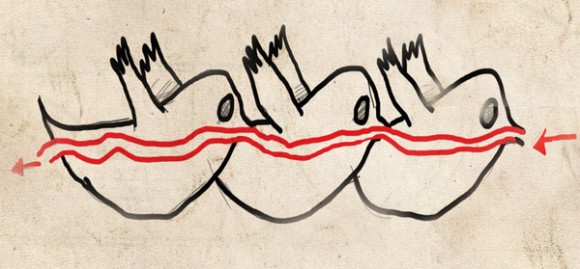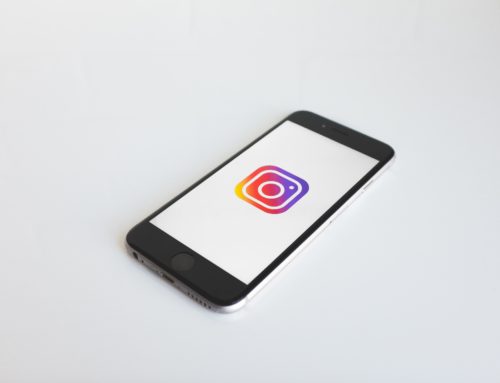 Guest post by Matt Krautstrunk
Guest post by Matt Krautstrunk
In the business world, professionalism is an asset.
If you are an outside sales rep or represent a company to clients, keeping yourself looking clean to represent a corporate image is something that most employers value. However, when it comes to branding, the opposite may be true.
Consumers value personal, truthful conversation from companies. On Twitter especially, a new term has arisen called “humanizing a brand.” This refers to a business’ attempt to give their brands a human touch.
Going beyond simply “personal” gives your brand more appeal, PR and potentially, controversy. Letting your followers know that your brand “hates rainy days and LA traffic” gives your followers a bit more to chew on … but reasoning with them as humans makes both parties value the relationship.
Sparking emotion and humanizing a brand can create immense value; however, tread carefully with your humanizing strategy. It sounds weird, eh? “Humanizing strategy” is an oxymoron in some regards, but you may be an oxymoron if you don’t understand how to humanize properly.
Here is what not to do.
Having the Wrong Human, Humanize
Finding a trust agent is difficult. Someone you employ to humanize your brand on Twitter should represent the brand, personify the brand, and embody the brand. This will allow them to virtually speak their minds.
Fast Company recently showcased the top 5 trust agents on Twitter. These people should give your brand an emotional tone that can only be found from a transparent human voice. Someone who is going to cover your business in a façade will not engage your community on the same level as a trust agent speaking his/her mind.
Take @Comcastcares for example. As a cable company, Comcast is notorious for poor customer service. However, they are able to leverage a personal experience to their Twitter account by humanizing the customer service experience. Bill Gerth is the trust agent for Comcast and he responds to customer inquiries and issues with his own voice.
Comcast made a smart strategic decision to upload a human photo and having him embody their brand; and they are able to leverage Twitter to improve their customer service.
Try to Reposition Your Image
This falls underneath a subsection of “know your business.” If your frontline employees understand your business’ target market, they ultimately know the community your brand has.
Humanizing isn’t about having an all-out party with your followers; it’s about understanding what they value, and emanating it with a human voice.
Marc Jacobs recently had a potential Twitter disaster when one of their interns went on a tirade, calling CEO Robert Duffy a “tyrant,” explaining, “My last day is tomorrow. I wouldn’t be tweeting this if not!” These were tweets that could wreck most corporate PR efforts.
However, @MarcJacobsIntl as a brand is seen as edgy and attention-grabbing. According to Mashable, “Given the amusing irreverence that has long marked the voice of Marc Jacobs’s Twitter feed; the rant was, in fact, perfectly on brand. We can only hope the company’s next Twitter overseer is as entertaining.”
The Marc Jacobs intern unknowingly humanized Marc Jacobs flawlessly. He exposed internal structure with a cinema vérité style (maybe he was a PR expert?). On the flip side, if his rant had graced the pages of any other brand it may have not boded so well. If that same intern worked for a “socially responsible” company like Whole Foods, those tweets would potentially hurt Whole Foods’ image.
Ignore Conversation
Failing to understand what people are saying about your company is detrimental. Humanizing involves making your brand somewhat “anti-corporate.” Failing to understand the conversation around your brand is potentially the most corporate, elitist thing you can do. Use tools like Twitter Search and Collecta to gather what people are saying.
According to The Next Web and Benjamin Palmer,
“Brands and people are forming a new nation on the Internet. In this new nation, new rules lead to new expectations. Don’t be a sociopath on the Web. Communication has evolved and a relationship requires participation from both parties. The more brands act like a human in the real world the better off they will be. Let your hair down, be real; treat them as friends not consumers. Your biggest fans want to embrace you;, all they want is to feel some love. They will be your evangelists.”
You should work to create friendships with your brand. People want to “feel some love,” give them love. Whether your business is a B2B lead generation company, or a new-wave fashion company, humanizing can work in your favor.
You just need to make sure you understand your community, and leverage a trust agent to embody your brand.
 Matt Krautstrunk is a social entrepreneur and writer on everything from social media marketing to VoIP phone systems for Resource Nation. A transplant from the beautiful Windy City, you’ll find him frolicking in the San Diego sun when he’s not working.
Matt Krautstrunk is a social entrepreneur and writer on everything from social media marketing to VoIP phone systems for Resource Nation. A transplant from the beautiful Windy City, you’ll find him frolicking in the San Diego sun when he’s not working.
Image Credit: Amazonaws









[…] by a person I’d enjoy hanging out with. However, you don’t want to go too far. Matt Krautstrunk writes on Waxing UnLyrical, “Consumers value personal, truthful conversation from companies. On Twitter […]
@RyoatCision “If I’m looking at a Twitter feed for a software company, for instance, and all they talk about are bars in the Bay Area, I might begin to wonder if they care at all about their products or are just hoping to get some downtime at work.”
Love it!
@UnlockTheDoor How nice of you to say and I very much hope you will be back regularly!
I think what you said is really critical. There is so much “push” with businesses, that it turns us off. They forget that businesses are run by people too, and if they just went with the “people” side of things, life would be so much easier for us all..
@MattKrautstrunk @HowieSPM@comcastcares customer way back. Their terrible customer service drove me to Verizon, which we’ve remained with (I’d never dream of switching back). Despite all the great SM stuff Comcast is doing – and from what I’ve seen, which is admittedly very little so this statement is only my personal opinion, it still doesn’t change the fact that I had a terrible experience with them before, and that stays with me.
Verizon is not particularly active on Twitter, as far as I know. But when I call them, my problems/questions are resolved almost immediately. That, I like. That’s what makes me stick with them (and also that I think FiOS totally kicks cable’s a$$).
@RyoatCision you are so right. It’s funny, how that works. It’s a tough line to walk, being human without being too human.
I was thinking about this today. Co-worker relationships in an office are pretty similar to SM. Everything is all business, and proper when you first meet your co-workers, then as time drags on we get comfortable enough to open up and be real with each other. That’s all there is to it!
@UnlockTheDoor Thanks for the kind words. A lot businesses are definitely doing it wrong, and think they are doing it right, because the facade of having say, 2,000 followers covers the fact they aren’t even in the SM game .
Great post Matt””you raise some really keen points to keep in mind, especially the notions of staying in-brand and paying attention to customers and clients in your feed. Humanizing a brand is, I think, less difficult than we might think””after all, human beings are the ones creating and managing these brands. A little talk about the weather and our lunches can go a long way, but I do caution not to oversaturate your feed with that. It’s important to keep in mind that we are also humans within an industry, and customers are likely there because of their interest in it. If I’m looking at a Twitter feed for a software company, for instance, and all they talk about are bars in the Bay Area, I might begin to wonder if they care at all about their products or are just hoping to get some downtime at work. A brand representative can do double duty talking about their interests within an industry, sharing notable blog posts or news items as fit (and don’t just RT: rep’s should add a little of why they are sharing). Such activities showcase both the rep’s interests, which can humanize them, and their expertise within a field. It also keep the feed substantive, which is important. Of course, the best way to humanize a brand through social media is to have real conversations: respond to inquiries directly, ask questions””strive to learn more about those you engage.
Matt, it’s a pleasure to read your work. I can tell that this has come from the heart, and that’s the best place to write from.
The problem I have with businesses is that when they set out, they don’t try to be human. They don’t try to be ‘there’ for their customers, to have conversations, to find out what’s REALLY going wrong or working out fine. Instead, they work from snapshots, taking what makes immediate sense and running with that. If you don’t like it, tough, but could you still do business with us anyway?
The human side of business should be more than just a side. It should be every side.
It’s my first time here Shonali, I like your blog thus far! Gonna check out some more :-)
@howieSPM I completely agree, I don’t know anybody who is “thrilled” about Comcast as a whole , and that is because they haven’t scaled their @comcastcares to cover a gazillion complaints. But it does warm my heart to know that instead of waiting on the phone and talking with an angry customer service rep, I can tweet Bill my problem and have it addressed personally.
Maybe Comcast wants to invest more in social media customer service to scale their operations in the future? I think the whole experience is different. It’s cool having your problem solved over Twitter. It’s not cool waiting on hold… But back to humanizing :)
Very nice post Matt!
I caution regarding some of the customer service urban myths that get supported by the Mashables and Social Media Talking Heads as examples to follow, in my opinion of course. Comcast cares is a horrible case study. My view is they help a handful of people on twitter while 99.9% of customers complaining still wait on hold for hours. To me that doesn’t say Comcast cares. It says Comcast cares about a select few and the rest of you F-Off. And ironically what if 1 million Comcast customers all signed up for twitter and they got 50,000 complaints on Twitter a day? This would of been Comcast Fails.
We have tools the we totally need great humans to interact with customers. The problem will always be scale. Yesterday I estimated to engage with 1 million people actively (vs one offs) a big brand would need 5,000 staff at a minimum. Which would mean reacting to 200 people a day for each staff member on twitter for example. So the platforms are really best for small volume engagement vs large volume. Based on this great post imagine trying to find 5000 people who won’t mess up your brand image?